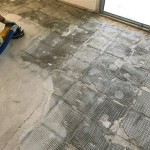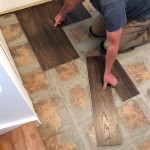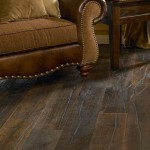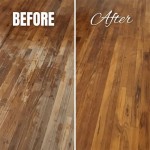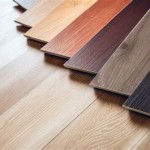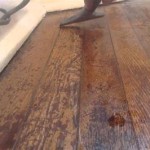How to Repair Water Damaged Laminate Flooring
Laminate flooring offers an attractive and cost-effective alternative to hardwood. However, its susceptibility to water damage remains a significant concern for homeowners. Unlike solid wood, laminate flooring comprises a composite core, typically fiberboard, covered by a decorative layer and a protective wear layer. When exposed to moisture, this core can swell, warp, and delaminate, leading to unsightly and potentially structurally unsound flooring. This article provides detailed instructions on how to address water damage in laminate flooring, ranging from minor spills to significant leaks.
Prompt action is crucial when dealing with water on laminate flooring. The longer water remains in contact with the laminate, the greater the risk of irreversible damage. Even seemingly small spills can seep into the seams and cause underlying issues that may not be immediately apparent. Understanding the source and extent of the water damage is the first step toward effective repair.
Immediate Actions Following Water Exposure
The initial response to water damage is critical in minimizing long-term problems. Prioritizing drying and mitigating further exposure is paramount.
First, identify and eliminate the source of the water. This may involve fixing a leaky pipe, addressing a roof leak, or simply cleaning up a spill. Ignoring the source will only exacerbate the problem and render any repair efforts futile. Ensure the underlying issue is resolved before proceeding with any drying or repair activities.
Second, begin extracting the water as quickly as possible. Use towels, mops, or a wet vacuum to remove standing water from the surface of the laminate flooring. Pay particular attention to edges and seams, as these are the areas where water tends to penetrate. For larger areas, consider using a water extraction machine, which can be rented from most hardware stores or equipment rental centers.
Third, promote air circulation to facilitate drying. Open windows and doors to allow for natural ventilation. Use fans to circulate air across the surface of the flooring. Dehumidifiers can also be used to reduce moisture levels in the air, which can accelerate the drying process. The goal is to create an environment that encourages evaporation and prevents further water absorption into the laminate.
Finally, document the damage. Take photographs and keep a record of the timeline of events. This documentation can be helpful when filing insurance claims or consulting with professional flooring contractors. Note the affected areas, the extent of the damage, and any actions taken to mitigate the problem.
Assessing the Damage
After the initial cleanup, a thorough assessment of the damage is necessary to determine the appropriate course of action. This involves a careful inspection of the flooring and the subfloor to identify the extent of the water penetration and any resulting structural issues.
Visually inspect the laminate flooring for signs of water damage, such as swelling, warping, bubbling, or discoloration. Pay close attention to the seams between planks, as these are often the first areas to show signs of water penetration. Also, check for any signs of mold or mildew growth, which can indicate prolonged moisture exposure.
Feel the flooring for any soft spots or areas that feel spongy. This can indicate that the core layer of the laminate has absorbed water and is beginning to break down. Also, check for any loose or lifting planks, which can be a sign that the adhesive has been compromised by water.
Check the subfloor for signs of water damage. This may involve removing baseboards or lifting up a corner of the laminate flooring to inspect the underlying surface. Look for signs of moisture, mold, or rot. A damaged subfloor can compromise the stability of the laminate flooring and may require repair or replacement.
Use a moisture meter to measure the moisture content of the laminate flooring and the subfloor. This will provide a more objective assessment of the extent of the water damage. Ideal moisture levels for laminate flooring typically range between 5% and 12%. If the moisture content is significantly higher, it indicates that the flooring is still wet and may require further drying.
Repairing Minor Water Damage
If the water damage is minor and limited to the surface of the laminate flooring, it may be possible to repair the damage without replacing the affected planks. This approach is typically suitable for small spills or areas where the water has not penetrated deeply into the core of the laminate.
For surface stains or discoloration, try cleaning the affected area with a mild detergent and water. Use a soft cloth or sponge to gently scrub the stain. Avoid using harsh chemicals or abrasive cleaners, as these can damage the wear layer of the laminate flooring. Rinse the area with clean water and dry thoroughly.
For minor swelling or warping, try applying heat to the affected area. Use a hairdryer or heat gun on a low setting to gently warm the laminate. This can help to evaporate any remaining moisture and allow the laminate to return to its original shape. Be careful not to overheat the laminate, as this can cause further damage. Apply gentle pressure to the area while heating to help flatten it.
For small chips or scratches, use a laminate repair kit. These kits typically contain fillers and touch-up paints that can be used to conceal minor imperfections. Follow the instructions on the kit to apply the filler and paint to the affected area. Allow the filler to dry completely before sanding and applying the touch-up paint. Blend the repaired area with the surrounding flooring to create a seamless finish.
For loose seams, use a laminate adhesive to re-bond the planks. Clean the affected area and apply a thin layer of adhesive to the edges of the planks. Press the planks together firmly and hold them in place until the adhesive has dried completely. Use painter's tape to secure the planks while the adhesive is drying. Wipe away any excess adhesive with a damp cloth.
Replacing Damaged Laminate Planks
If the water damage is extensive, or if the laminate flooring has suffered significant swelling, warping, or delamination, it may be necessary to replace the affected planks. This is the most effective way to restore the flooring to its original condition and prevent further problems.
First, identify the damaged planks that need to be replaced. Use a utility knife or scoring tool to cut around the perimeter of the damaged planks. Be careful not to damage the surrounding planks. Remove the damaged planks using a pry bar or chisel. If the planks are glued down, you may need to use a heat gun to soften the adhesive.
Second, prepare the subfloor for the new planks. Clean the subfloor to remove any debris or adhesive residue. If the subfloor is damaged, it may need to be repaired or replaced before installing the new planks. Ensure the subfloor is level and dry before proceeding.
Third, install the new planks. If the planks are interlocking, simply align the edges and snap them into place. If the planks are glued down, apply a thin layer of laminate adhesive to the subfloor and press the planks into place. Use a rubber mallet to gently tap the planks into place, ensuring a tight fit. Use painter's tape to secure the planks while the adhesive is drying. Wipe away any excess adhesive with a damp cloth.
Fourth, finish the repair. Install new baseboards or trim to conceal the edges of the flooring. Use caulk to seal any gaps between the flooring and the baseboards. Clean the flooring with a laminate cleaner to remove any dust or debris.
Matching the replacement planks to the existing flooring is crucial for a seamless repair. If possible, purchase the replacement planks from the same manufacturer and product line as the original flooring. If the original flooring is no longer available, try to find a close match in terms of color, pattern, and texture. Consider using planks from a less visible area of the floor, such as under furniture, to create a more seamless repair.
Preventing Future Water Damage
Preventing future water damage is essential to protecting the investment in laminate flooring. Taking proactive measures can significantly reduce the risk of water-related problems.
Address any potential sources of water leaks promptly. Repair leaky pipes, faucets, and roofs immediately. Inspect appliances such as dishwashers and washing machines regularly for leaks. Ensure proper drainage around the foundation of the house to prevent water from seeping into the subfloor.
Use mats and rugs in areas prone to spills, such as kitchens and bathrooms. These can help to absorb spills and prevent water from reaching the laminate flooring. Use waterproof mats under pet bowls and near entryways to protect the flooring from water and dirt.
Clean up spills immediately. The longer water remains in contact with the laminate flooring, the greater the risk of damage. Use a dry cloth or towel to wipe up spills as soon as they occur. Avoid using excessive amounts of water when cleaning the flooring. Use a damp mop or cloth instead of a wet mop.
Maintain proper humidity levels in the house. High humidity can contribute to moisture buildup in the laminate flooring, leading to swelling and warping. Use dehumidifiers to reduce humidity levels in damp areas, such as basements. Ensure proper ventilation in bathrooms and kitchens to prevent moisture buildup.

How To Prevent Repair Water Damage Laminate Flooring Claude Browns

A Guide To Fix Wet Laminate Floors All Dry Usa

How To Repair Laminate Flooring With Water Damage Dry Force

Step By Guide On How To Fix A Laminate Floor That Got Wet

How To Fix Laminate Floor Water Damage Nut

Repair Or Replace Water Damaged Floors 50 Floor

How To Repair Laminate Flooring With Water Damage 12 Steps

How To Replace Warped Water Damaged Laminate Floor Boards

Why Am I Being Told That My Waterproof Laminate Flooring Needs To Be Pulled Up After Water Damage Restopros Of Northeast Georgia

How Do I Camouflage Water Damaged Laminate Flooring Hometalk
See Also
